5 Ways to Reduce Operating Costs in Real Estate
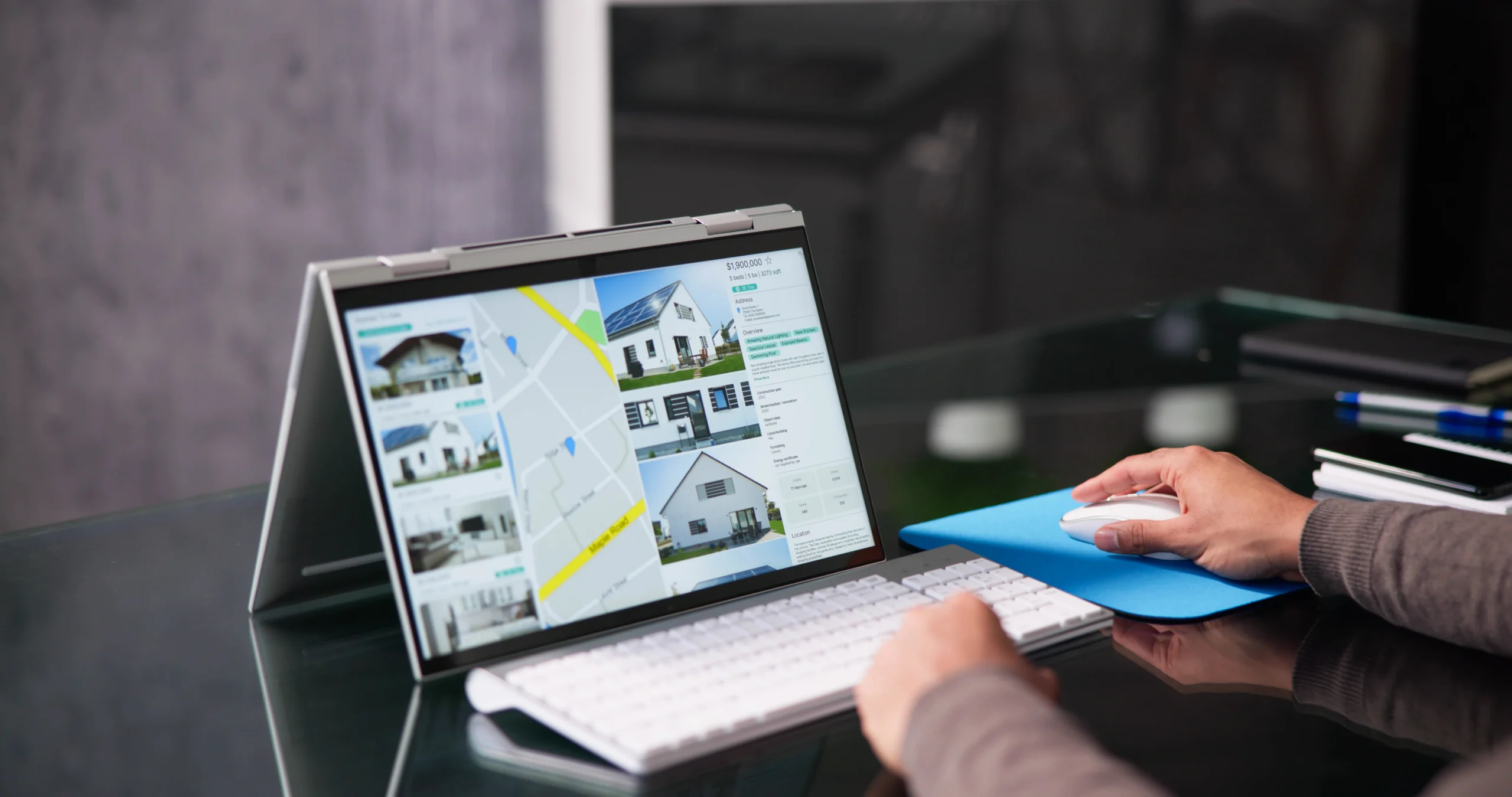
According to recent data, operating costs across the industry grew at a compound annual rate of 4.15% between 2015 and 2024, putting fresh pressure on multifamily and commercial properties. This cost escalation is not merely a data point – it erodes margins and forces firms to compromise service quality or raise fees to remain solvent. Property managers and agency owners have felt this squeeze firsthand, especially with inflation lingering and supply chain hiccups still rippling through the market.
Basic automation tools, like simple scheduling software or email templates, helped a bit in the past. But in 2026, these tools will be insufficient. The property landscape demands more – a connected ecosystem of advanced technologies that optimize real estate business operations.
This post will walk you through five key innovations shaping real estate optimization. It’ll cover how they tackle everyday headaches (e.g., data silos and skyrocketing utility bills) by looking at real-world examples and fresh insights. By the end, you’ll have a clear path to reduce operational costs and position your business for long-term growth.
PropTech Platforms as a Digital Command Center
Recall the last time you hunted for a client’s contact details across three different apps. Or try to pull together a report only to find mismatched data from your listing platform and accounting software. These data silos impede decision-making and inflate operational real estate expenses. For small to medium businesses, this fragmented setup often results in wasted labor hours and even missed opportunities.
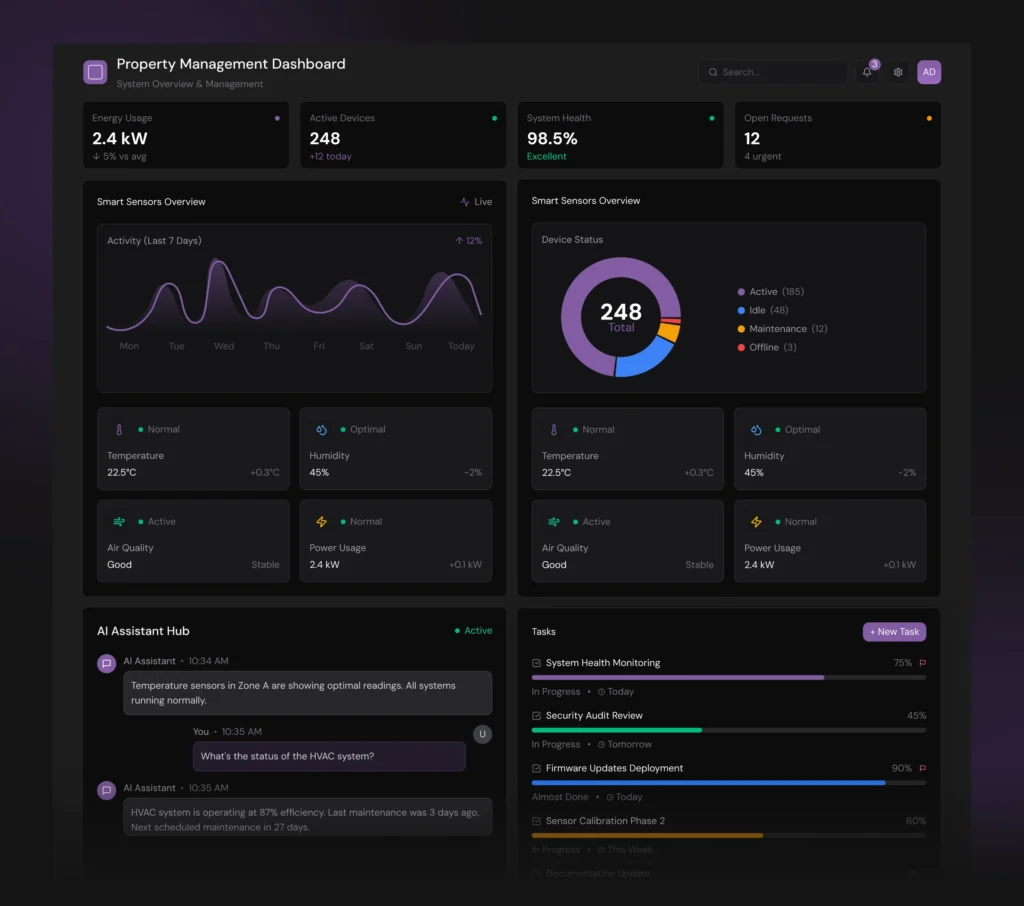
The Fix is Unified CRM & PMS Platforms
A centralized PropTech platform acts as a single source of truth. It’s not off-the-shelf software but a custom CRM or PMS (property management system) that integrates everything from lead tracking to financials. Such systems pull data from various sources into one dashboard to give you a unified view of real estate systems and processes. The result is faster insights, fewer errors, and a direct reduction in property running costs.
Real Case
Take, for instance, our work at Dinamicka Development. We partnered with a Canadian real estate agency facing exactly these issues: scattered data, manual updates, and inefficient team communication. We developed a tailored CRM system to unify their operations (workflow automation and real-time analytics) and, as a result:
- cut administrative time;
- increased lead conversion rates;
- eliminated duplicate leads;
- improved deal tracking;
- reduced operational costs.
This project transformed inefficient real estate business operations into a simple, integrated process. You can dive deeper into this project in our CRM System for Real Estate Agency Case Study for the full details of how this foundational technology changed their business trajectory. If you’re exploring similar solutions, do not hesitate to visit our Real Estate Software Development Services and find out how we can tailor these solutions specifically for your requirements.
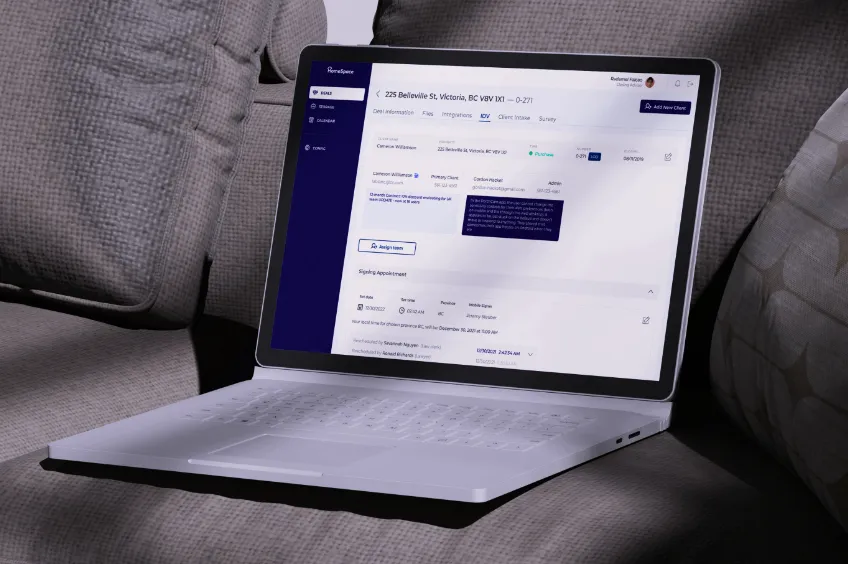
Everything is established upon the foundation layer. It is necessary, and without it, even the most advanced AI tools will be useless since they cannot obtain timely and correct data. Begin with one centralized management platform, and you will affect all aspects of your operation.
Process Automation & RPA + AI Agents
Most real estate agents still deal with some manual tasks in their daily routine – for example, entering the property information, creating invoices, and responding to generic customer inquiries such as “What is the status of my listing?” These manual processes take a lot of time, raise the labor cost, and are prone to human mistakes. The result is negative for the company and creates a stressful atmosphere in the workplace.
Today’s Solution = Process Automation + AI Agents
According to Forbes, 49% of real estate business owners have already cut costs with the help of AI, and their operational savings are approximately 15%. Intelligent software assists in fostering leads and reducing marketing follow-up by half. In the case of corporate real estate management, it means workflow, happy teams, and reduced operating costs.
- Robotic process automation (RPA) replaces the back-office grunt work and frees employees to do more valuable work. RPA bots can automatically file, tag, and archive tenant agreements, lease renewals, and regulatory documents.
- AI agents deal with front-line interactions twenty-four hours a day. They qualify leads through chat and write personalized responses depending on the history of the clients. They can provide instant confirmations, reminders, and answer frequently asked questions regarding listings and leasing terms.
Streamlining these daily processes reduces the operating expenses. AI minimizes human error and enhances customer service. The savings can then be reinvested into the companies through proactive marketing and growth initiatives. As an illustration, property managers working at a multifamily complex do not need to pursue rent payments manually: an RPA bot can scan due dates and identify overdue payments. At the same time, an AI agent replies to questions in real time and does not require a 24-hour staff presence. The system becomes an extra team member who never sleeps, directly cutting costs in multifamily operations and beyond.
AI-Powered Predictive Analytics for Data-Driven Decisions
Often, real estate agents use old ideas or too little market information. For example, a property price might be set using only a guess instead of looking at recent sales of similar homes (comparables) or expected future income (cash flows). Because of this, homes can stay listed for sale longer than planned.
Risks for investors: Investors often put money into new building areas that seem good but don’t check for big issues like zoning rules, changing loan rates, or shifts in buyer needs. This can stop projects and cause them to lose money.
The role of technology: These holes in data directly hurt profits and make the unpredictable real estate business even more uncertain. Adding to this problem, it takes a lot of time and people to look at large amounts of market data, which slows things down and increases operating expenses in real estate business. AI technology can do the same job in minutes.
AI-powered predictive analytics changes that by analyzing vast datasets to forecast trends. It can predict property values with startling accuracy or even anticipate rental demand fluctuations. This shifts you from a reactive to a proactive approach, thereby minimizing risks and optimizing returns.
For instance, predictive AI can:
- estimate future asset values and optimize rental pricing strategies in real-time based on competitive supply and demand (maximum yield per asset);
- move past simple demographics to identify micro-markets with the highest potential for growth (dramatic minimization of investment risks);
- predict which tenants are most likely to renew and which properties will soon require re-leasing (proactive deployment of retention strategies and reduction of costly vacancy periods).
The analytics tools can analyze historical sales, economic indicators, and local demographics to suggest pricing strategies that are quicker to sell. The survey by Deloitte revealed that more than 72% of real estate companies already utilize predictive analytics for opportunity identification and risk management. Such practice can lead to the making of well-informed decisions and to the decrease of financial risk, plus it could mean avoiding a bad buy (thousands in savings in holding costs).
Implementing predictive analytics translates into:
- constant monitoring of the market and competitors;
- accurate rent and sales forecasting;
- early detection of maintenance problems.
Predictive analytics is not a ‘nice to have’ anymore. For anyone who wants to control operating expenses, this practice has become central to the real estate systems and processes.
For example, if a COO integrates these tools into their workflow, they avoid a risky multifamily acquisition by spotting a predicted dip in local employment – the data their intuition missed. For small agencies, this evens the playing field against larger competitors. The question of how to reduce operational costs becomes a matter of smart data use rather than luck.
Slashing Costs with Smart Building & IoT Solutions
Utility bills creeping up or maintenance surprises derailing a budget are classic pain points for property managers. Reactive fixes – like waiting for an HVAC breakdown – can cost thousands more than prevention. Add security lapses, and you’re looking at even higher risks and expenses.
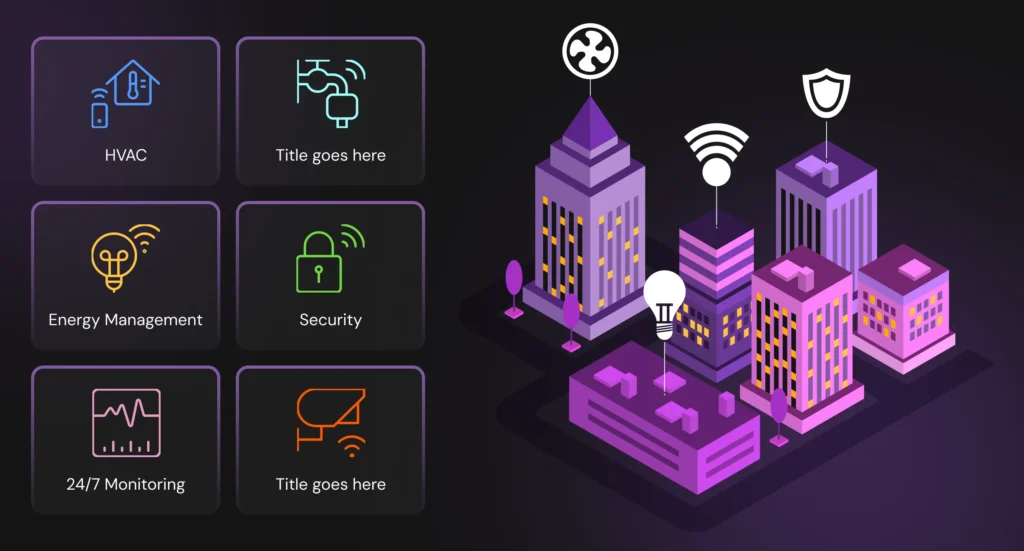
Smart building solutions powered by the Internet of Things flip this script. IoT sensors are the eyes and ears of your real estate portfolio. They monitor everything from energy use to equipment health and provide real-time data so you can pivot from reactive fixes to proactive efficiency.
Examples:
- Smart thermostats and lighting cut waste by adapting to occupancy. They automatically adjust HVAC and lighting systems to operate only when and where they are needed. This stops the most common source of wasted energy.
- Predictive alerts detect and flag issues – like a failing elevator motor. Automated systems catch leaks or faulty equipment before a small problem escalates and becomes a massive, expensive crisis.
The Payoff:
Market-validated results show most smart building investments pay off within months, not years. The global smart building market is projected to triple this decade, outpacing almost every other operational real estate technology segment.
Studies show that AI-based HVAC optimization can lead to a 20% to over 30% reduction in electricity consumption, directly lowering operating expenses in real estate. That translates to thousands saved annually on utilities alone for a mid-sized portfolio, plus fewer emergency calls.
In practice, IoT sensors in property management complexes can detect water leaks early, preventing flood damage that could’ve run into five figures. This tech is practical for operational real estate in 2026, and it adds value while cutting costs. For example, a mid-sized multifamily operator can reduce year-one utility costs by 35% after rolling out IoT sensors and automation – unlocking capital for portfolio expansion. For those worried about implementation time, new wireless sensors can be up and running in less than a week, integrating with most existing systems.
Digital Twins & Generative AI Tools for Reducing Risk in Development
Property development is a high-stakes game. Unforeseen costs during construction or misjudged feasibility can balloon budgets and delay projects. Sales teams face similar hurdles when trying to convince investors without concrete visuals or projections.
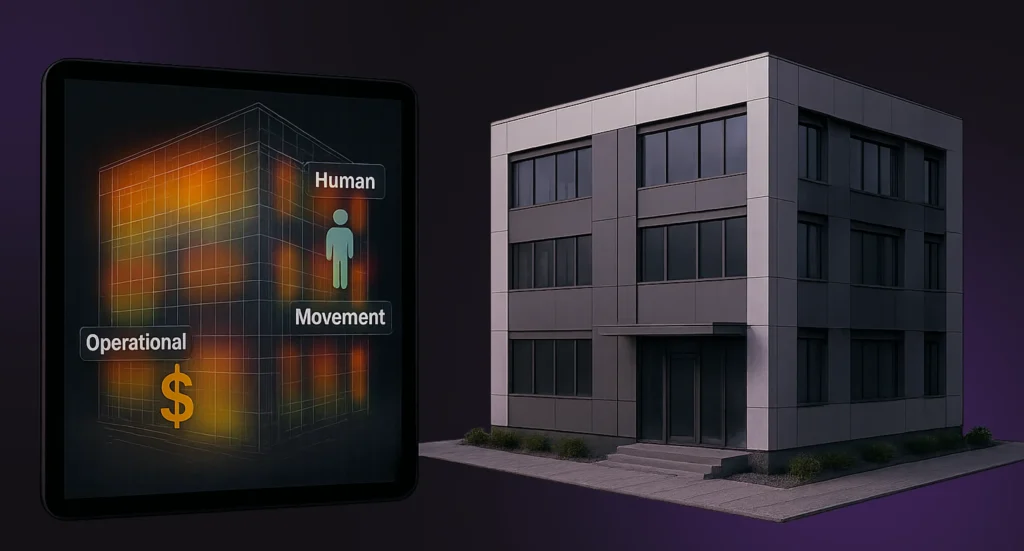
However, construction setbacks and costly redesigns are preventable. Digital twins and generative AI tackle this head-on.
- A digital twin is a virtual replica of a building, simulating operations to forecast long-term costs – like energy use or maintenance needs – before breaking ground.
- Pair it with generative AI, which rapidly models scenarios (e.g., different layouts or materials), and you can evaluate options quickly, picking the most efficient.
This combination drastically lowers the number of uncertainties, reducing 10-15% of the development cost through better planning. A human analyst can model two or three different development scenarios manually, while the AI can create hundreds of variations and immediately give the financial implications of each one. Just like doing a virtual reality property test to catch defects early. In addition to eliminating the high costs of the initial feasibility study, the digital twin and generative AI combination guarantees the lowest risk and the highest possible return.
You may also be interested in the Guide to the Technologies Disrupting Real Estate in 2026
Conclusion
These technologies – from integrated PropTech platforms to IoT and AI-driven tools – are not just limited to standalone applications. They create an interconnected ecosystem that changes the real estate business processes completely and thus leads to the optimization and resilience of real estate. The technologies enhance the quality of the services, thereby creating a future-proof business that can win over the uncertainties of 2026 and beyond. Ready to turn your real estate operations into a lean, future-ready powerhouse? Dinamicka Development crafts custom solutions that cut costs and drive growth. Contact us for a no-cost consultation to see how this technology can work for your business.
Latest writings

How Intelligent Routing Algorithms Contribute to Logistics Optimization

MVP Development for Startups in 2025: Speed Up Launch with AI
